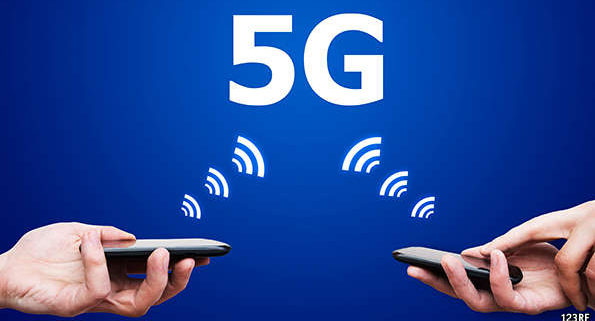5G Technology
5G Technology mobile networks are the proposed next broadcast communications models past the current 4G/IMT-Advanced measures.Mobile and wireless networks have made fabulous growth in the last fifteen years. Currently, many cellular phones have also a WLAN adapter. Besides their 3G, 2G, WLAN, Bluetooth etc. adapters. Utilizing IP for both, 2.5G or 3G (PLMN) Public Land Mobile Networks on one side and WLAN on the other, elevate research on their coordination. As to 4G, its concentration is towards consistent coordination of cell systems, for example, GSM and 3G.
Multi mode client terminals are viewed as must have for 4G, yet unique security systems and diverse QoS bolster in various wireless technologies remain a test. In any case, incorporation among various wireless networks (e.g. PLMN and WLAN) is working practically speaking even today. In any case, unique wireless networks from a solitary terminal are utilized solely, that is, there is no consolidating of various wireless access technologies for the same session (e.g., FTP download). 
The proposed Open Wireless Architecture (OWA) in is focused on giving open base band preparing modules with open interface parameters to bolster distinctive existing and also future wireless communication standards. The OWA is alert to MAC/PHY layers of future (4G) mobile terminals. The referenced effort above gives a ground to the meaning of an idea for past 4G mobile systems as 5G portable systems. In the proposed idea the portable mobile client is on the highest point of all.
The 5G technology will have programming described radios and tweak conspire and additionally new error control plans can be downloaded from the Internet on the run. The improvement is seen towards the client terminals as a concentration of the 5G portable systems. The terminals will have entry to various remote advancements in the meantime and the terminal ought to have the capacity to consolidate distinctive streams from various advances. Every system will be in charge of taking care of client portability, while the terminal will settle on the last decision among various wireless/mobile get to network suppliers for a given administration. The paper additionally proposes wise Internet telephone idea where the cell phone can pick the best associations by chose limitations and progressively transform them amid a solitary end-to-end connection.
5G Technology
5th generation mobile networks are the proposed next broadcast communications models past the current 4G/IMT-Advanced measures. Instead of speedier pinnacle Internet association speeds, 5G arranging goes for a higher limit than current 4G, permitting a higher number of portable broadband clients per range unit, and permitting utilization of higher or boundless information amounts in gigabyte every month and client. This would make it attainable for a vast bit of the populace to stream top-quality media numerous hours every day with their cell phones, when out of reach of wifi hotspots. 5G innovative work likewise goes for enhanced support of machine to machine correspondence, otherwise called the Internet of things, going for lower cost, bring down battery utilization and lower inactivity than 4G gear. There is presently no standard for 5G deployments. The Next Generation Mobile Networks union describes the following requirements that a 5G standard should perform:
Requirements for 5G standard perform
- In metropolitan areas, Data rates of 100 MB/sec
- In Office area, 1 GB/sec for many workers on the same office floor
- Spectral efficiency significantly improved compared to 4G
- Coverage enhanced
- Signaling efficiency better
- Latency must be 1ms
- Latency compact significantly compared to LTE.[2]
The Next Generation Mobile Networks union feels that 5G Technology ought to be taken off by 2020 to meet business and client requests. Notwithstanding giving essentially speedier rates, they foresee that 5G organizes likewise should meet new utilize cases, for example, the Internet of Things (internet connected devices) and additionally communicate like lifeline communication and services in times of common fiasco. Bearers, chipmakers, OEMS and OSATs, for example, Advanced Semiconductor Engineering (ASE), have been preparing for this person to come (5G) next-generation (5G) wireless standard, as mobile frameworks and base stations will require new and speedier application processors, basebands and RF gadgets.
In spite of the fact that upgraded benchmarks that characterize abilities past those characterized in the current 4G models are under thought, those new capacities have been gathered under the current ITU-T 4G guidelines. The U.S. Government Communications Commission (FCC) affirmed the range for 5G Technology, including the 28 Gigahertz, 37 GHz, and 39 GHz groups, on July 14, 2016.
• A super-productive versatile system that conveys a superior performing system for lower speculation cost. It addresses the mobile system operators’ squeezing need to see the unit cost of data transport falling at generally the same rate from the volume of the data request is rising. It would be a jump forward in effectiveness in view of the IET Demand Attentive Network (DAN) philosophy.[17]
• A super-quick mobile network involving the up and coming era of little cells thickly bunched to give a touching scope over at any rate urban zones and getting the world to the last outskirts of genuine “wide-zone portability. It would oblige access to range under 4 GHz may be by means of the world’s first worldwide execution of Dynamic Spectrum Access.
• A merged fiber-remote system that utilizes, interestingly for wireless Internet access to, the millimeter wave groups (20 – 60 GHz) in order to permit wide-transfer speed radio channels ready to bolster information get to rates of up to 10 GB/s. The association basically involves “short” remote connections on the end of the local fiber optic link. It would be increasingly an “itinerant” service (like Wi-Fi) as opposed to a wide-zone mobile service.





























